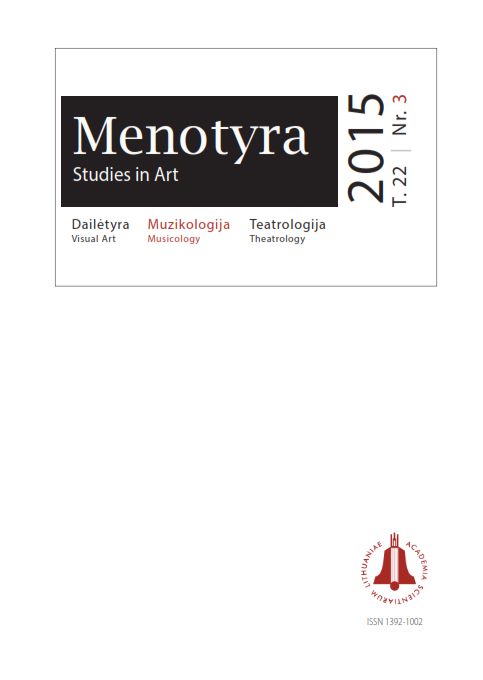Grigališkoji psalmodija Lietuvos Didžiojoje Kunigaikštystėje XV–XVIII a.
Gregorian psalmody in the Great Duchy of Lithuania in the 15–18th centuries
Author(s): Jonas VilimasSubject(s): Fine Arts / Performing Arts, Music
Published by: Lietuvos mokslų akademijos leidykla
Keywords: psalm, psalmody; antiphoner; Gregorian Chant; diocesan liturgies; GDL
Summary/Abstract: The article deals with various historical forms and expression of the plainchant psalmody for Divine Office as it was practiced in the Grand Duchy of Lithuania (GDL) in the late medieval and early modern period. The focal point of the analysis is the cadences of the psalms as depicted in various plainchant manuscripts as well as various tables of psalm tones in various sources of later periods. The first part of the paper discusses the material contained in the oldest sources available. The principal examples are taken from the late 15th-century antiphoners that are belie- ved to belong to Franciscan friars from Vilnius (LMAVB/F22-101 and LMAVB/F22-102) and several fragments of unknown provenience (either late 15th or early 16th century) that evidently contain features proper to the Central European diocesan usage. After analyzing these source it became rather evident that already in the pre-Tridentine period at least two major traditions of office psalmody were in use in Lithuania. The first one discloses the properties characteristic of the Western European usage (in the GDL, it was practiced by Franciscan friars), and the second one the properties of the Central European usage (most likely in diocesan liturgies). These tendencies are further revealed in the second part of the paper, which discusses the post-Tridentine situation of office psalmody in the GDL. Due to a higher availability, a bigger number of sources were taken into account. In addition to several Franciscan antiphoners, other song books and printed manuals were taken into account. Among them were an antiphoner that belonged to the Canons Regular of the Lateran (VUB/F45-19) and a printed partial antiphoner prepared by S. Lauxmin etc. What became evident from the analysis was that the Central European tradition of the office psalmody became much more widely spread than that of the Western European usage. The latter was continued by the Franciscan friars (although not necessary all branches of Franciscans in the GDL used the same tradition). However, the former should be considered the normative, or close to the normative, form of office psalmody in the GDL in the 17–18th centuries.
Journal: Menotyra
- Issue Year: 22/2015
- Issue No: 3
- Page Range: 189-207
- Page Count: 19
- Language: Lithuanian

